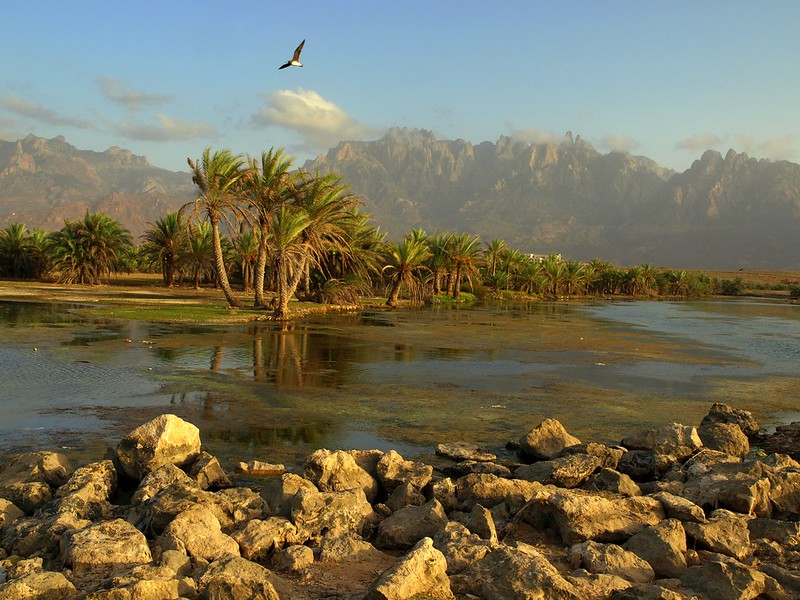Socotra Facts
- This breathtaking creation of time and geological forces most frequently goes by the deceptively simple name of Socotra. Yet, the site’s also held other titles in various languages across time. These include Suqutra, Dioscorida, Socotora, and Soqotra.
- The first stems from the Arabic script, while the ancient Greeks and Romans used the second in their texts. Meanwhile, the third represents a Latin variation, used in ancient European maps and texts. The final one, though, forms a common local spelling.
- It’s unknown if prehistoric man knew of it. Archaeological evidence places the first confirmed human presence on the island at sometime in the 2nd millennium BCE. The site’s strategic location and unique biodiversity likely attracted seafarers and traders.
- Experts also consider it possible that these came from the Arabian Peninsula, the Horn of Africa, or the Indian subcontinent. By the 1st millennium BCE, the site formed a hub for maritime trade, particularly noted for its production of frankincense and myrrh.
- Today, Socotra stands out among the countless other islands of the world in several important ways. It boasts both great beauty and a rich, diverse cultural history. Due to these factors, and still more, in 2008, UNESCO named the island a World Heritage Site.
Related Articles
Socotra Physical Description
The undeniably breathtaking Socotra captures the attention and imaginatio of those fortunate enough to visit it for a variety of reasons. High among those stands the fact that the term names both an archipelago consisting four islands, and the principal island itself.
In terms of physical dimensions, though, the main itself island truly dominates the small group. In fact, this single site individually forms approximately 95% of the total landmass of the overall group. It alone boasts an area measuring roughly 1,465 sq mi (3,796 sq km).
The isle also has an understandably irregular coastline and outline. It does, however, possess a generally rectangular shape. In length, it measures roughly 82 mi (132 km ). Its maximum measured width, though, only reaches about 30.9 mi (49.7 km) at its greatest point.
The main island also contains many types of landscapes to pique one’s interest. Its coastline represents an excellent example of this, harboring a wide variety of wonders. These include numerous sandy beaches, rocky shores, and cliffs, along with several bays and inlets.
Further inland, however, the marvelous Socotra holds still more geological wonders to please the viewer. A large number of coastal plains and limestone plateaus also cover much of the island. These serve to create a varied landscape with numerous caves and canyons.
Much of the rest of the surface area also has a highly rugged nature. Its terrain plays host to a surprising number of mountains. The highest of these bears the name of the Hagghier Mountains. This distinctive range rises to a maximum height of 5,007 ft (1,526 ft).
Socotra Location, Formation, and Ecology
The mind-blowing marvel known as Socotra formed in a region of the globe already well known for its abudnace of wonders, both geological and organic. The location of that placement therefore likely won’t surprise many of you. Geographically, it’s part of Africa.
More precisely, Nature formed it in a position that puts the island and archipelago in the waters now placed between the Guardafui Channel and the Arabian Sea. Officially, despite its location near Africa, it also now constitutes a part of the country of Yemen, in Asia.
Relative to the nearest landmasses, it’s only moderately far from the nearest continent. The collection of bodies further sits roughly 205 nautical mi (380 km) south of the Arabian Peninsula. It also lies approximately 130 nautical mi (240 km) east of the country of Somalia.
The geological formation of this wonder of Nature occurred as the result of a complex history involving tectonic activity and ancient geological processes. This combination also began in the distant past, with some estimates placing those origins at 60 million years ago.
Experts believe that the islands first formed as part of the ancient supercontinent named Gondwana. Its current geological structure began forming when the Arabian Plate started rifting from the African Plate, possibly during the late Cretaceous to early Paleogene periods.
This represented part of a larger process that led to the opening of the Gulf of Aden and the separation of the Arabian Peninsula from Africa. In time, it became increasingly isolated from the mainland. This led to the development of its unique ecosystems and biodiversity.
Given the high ratio of limestone in its underlying bedrock, wind and water erosion also played strong roles in the formation of its features. This process contributed to the sculpting of the island’s dramatic landscapes, including cliffs, canyons, and unique rock formations.
Socotra’s amazing ecology remains renowned for its unique biodiversity and extraordinarily high levels of endemism. These factors serve to make this marvel of Nature one of the most biologically diverse and ecologically significant islands found anywhere in the world.
About 37% of the flora here appear nowhere else on earth! Notable species include the Dragon’s Blood Tree, the Socotran Desert Rose, and the Cucumber Tree. The island’s plants range from coastal mangroves and shrublands to montane forest in the Hagghier Mountains.
Distinctive fauna also make their home here. This includes several endemic species of birds, such as the Socotra Starling, the Socotra Sunbird, and Socotra Warbler. The remarkable location additionally serves as a critical stopover for countless migratory birds as well.
The island further boasts a high number of endemic reptiles, including species of geckos, skinks, and legless lizards. Invertebrate diversity also qualifies as relatively high, with many endemic insects, spiders, and mollusks. Many display very unique adaptations.
Features Sharing Its Area
Check out our other articles on 3 Beautiful Canadian Butterflies, Eurasian Griffin Vulture, Mammoth Hot Springs, Giant Swallowtail, Bird’s Foot Violet, Texas Alligator Lizard, Maned Wolf

